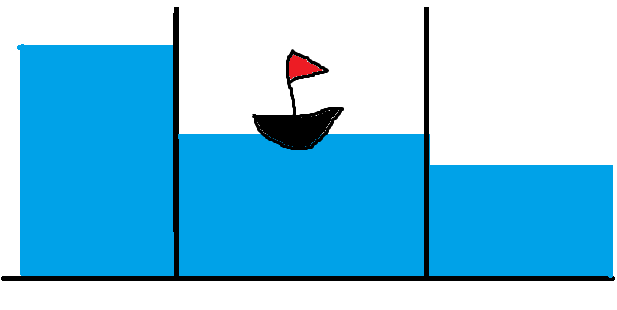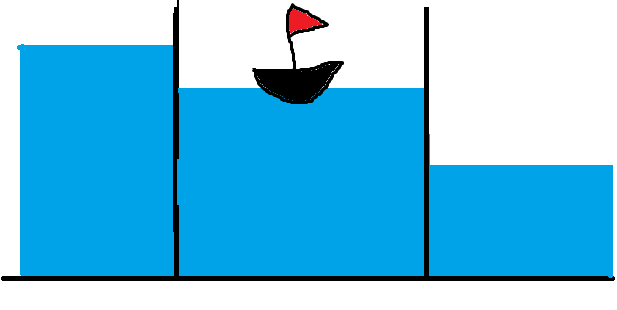Canal Locks
Updated:
I recently watched this video which discussed how locks worked. While locks themselves are simplistic, this video explores the complicated engineering solutions for mitigating the environmental impact of moving so much water around.
What are water canals
Water canals are super cool. They’re man-made structures that allow for moving ships between two different waterways.
They allow for traversing obstructions such as a dam or waterfall. Or rough water conditions like rapids or streams.
More famously, they can be used to form a connection between two disconnected waterways, allowing for a shortcut for ship passage, such as with the Panama Canal. The shortcut greatly shortens the distance to the other side.
How do they work

Canal locks work very simply as bucket of water that can fill up (to move ships upstream) or drain out (to move ships down).

Water moves via gravity, which means it always moves from higher water level to lower. The order that we open the drains is to manipulate whether we want to raise a ship up or down.
Efficiency
The main problem is that this moves water one-way. Over time, this constant movement of water can affect the local ecosystem by moving more water than can be replenished by the water cycle. So engineers have devised clever solutions to reduce the impact.

A reservoir can be introduced that can hold the water as it drains. This water will help to fill back up the lock. Since the lock and water works by gravity, we are limited by height. The most efficient system will only produce 50% efficiency: half the water being drained to lower can be used to re-raise it again.
To achieve close to 50% efficiency, the reservoir would need to minimize its own height. As the reservoir gets taller, this limits the height of the water it can hold. You would need an infinitely thin reservoir, with large surface area, to get 50% efficiency.
In practice, this ends up being multiple, shallow reservoirs. it becomes a question of trade-offs. We would need to weight the cost of complexity and maintenance against the reduction in environmental impact. At some point, it makes more sense to pursue environmental strategies somewhere else, such as a water pump.